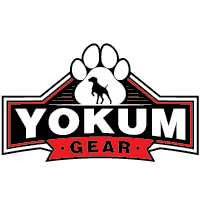Understanding the Importance of a Dog Walking Harness
Walking your dog is an essential activity for both their physical health and mental wellbeing. A proper dog walking harness can significantly enhance this experience by offering better control and reducing potential strain on your dog's neck. Choosing the right harness requires consideration of several factors including the dog's size, behavior, and specific needs.
Types of Dog Walking Harnesses
Standard Harness
A standard harness is the most common type, designed to distribute the force evenly across your dog's chest and back. This option is ideal for smaller dogs or well-behaved larger dogs.
No-Pull Harness
No-pull harnesses are specially designed to discourage pulling behavior. These harnesses typically have a front clip that redirects your dog's forward motion, making it easier to manage and train them.
Step-In Harness
For dogs that might be uncomfortable with a harness going over their head, a step-in harness allows you to easily place their legs through the openings before securing it around their body.
Key Features to Look For
Material
Durable materials such as nylon, polyester, or leather are ideal choices. These materials should also be soft enough to not cause irritation. Look for harnesses with padded sections for added comfort.
Adjustability
An adjustable harness ensures a better fit, accommodating your dog’s growth or any weight changes. It helps in providing security and comfort, reducing chances of the harness slipping off.
Security
Check the hardware quality including buckles and D-rings. These should be sturdy and resistant to wear and tear. Quick-release buckles offer convenience but should not compromise on safety.
Visibility
If you walk your dog during early mornings or late evenings, consider a harness with reflective strips to enhance visibility for oncoming traffic and other pedestrians.
Measuring Your Dog for a Harness
Accurate measurements are crucial for selecting the right size. Use a flexible tape measure to determine the girth (the widest part of the chest, usually behind the front legs) and the lower neck circumference. Compare these measurements with the sizing chart provided by the manufacturer.
Training Your Dog to Wear a Harness
Introduce the harness to your dog slowly. Let them sniff and inspect it before putting it on. Start with short wearing periods, gradually increasing the duration as your dog becomes more accustomed. Positive reinforcement with treats and praise can help create a positive association.
Conclusion
Choosing the best dog walking harness involves understanding the different types, key features to look out for, and ensuring a proper fit. Taking the time to find the right harness can make walks more enjoyable and safer for both you and your dog. Whether it's for training, comfort, or security, there is a harness that perfectly matches your needs and those of your furry friend.

